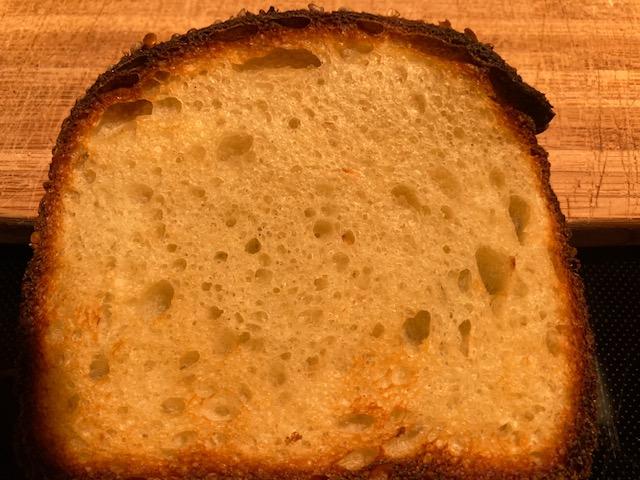The learning continues. Thanks to receiving a cornucopia of suggestions on my previous bake of the Bouabsa Pullman I moved forth and applied some of those changes, further upgrading my nascent Pullman pan skills.
Previous improvements over the first bake were documented in the linked-to post above. I decided to move away from the IDY Bouabsa dough to a Levain semolina dough. Rather than be a traditionalist and use a formula ready-made for a Pullman, I selected the Weekend Bakery Semolina dough.
I'd made these before as baguettes about two years or so ago. They differ from my go-to semolina formula with a 37.5% semolina / 62.5% AP flour mix vs. my usual 60/40 mix. Also comes in at higher hydration of 72% vs. ~67%.
Further changes applies this time:
- Increase the loaf size to 900g
- Butter the pan rather than spray canola oil.
- Allow more time for the in-pan proofing than before.
- Concern for a too dark top, I tented the loaf for the final 10 minutes, probably too many minutes.
- Steam for ~22 minutes total. At half way through I removed the loaf from the pan and then steamed the oven again.
One suggestion I did not follow through on was to score the top of the loaf. The surface was so delicate at bake time that I was concerned about ruining the loaf. Next time.
The loaf baked for ~33 minutes @ 430dF but still did not come as high as the loaf pan. One "mistake" that may have been detrimental - I took the dough out of the overnight retarded BF container to cleave off the additional 550g of dough, and then placed the 900g back into the container to warm up. I imagine this disturbed the dough somewhat. I should have divided the dough into two separate containers after the countertop BF. Lesson learned.
Overall I'm pretty happy with this bake and considering that semolina exhibits a relatively tight crumb, at least in my kitchen, I think the finished product came out just fine. Considering the lower percentage of semolina in the formula, the flavor is a little shy of what I look for in a semolina bread.
Here you can see where the dough decided to score itself.

A view from the End Zone.

These 3 little piggies went to market.

A relatively evenly distributed crumb with an evenly colored bake all around the crust.

I think toast is almost always sexier than plain bread.
